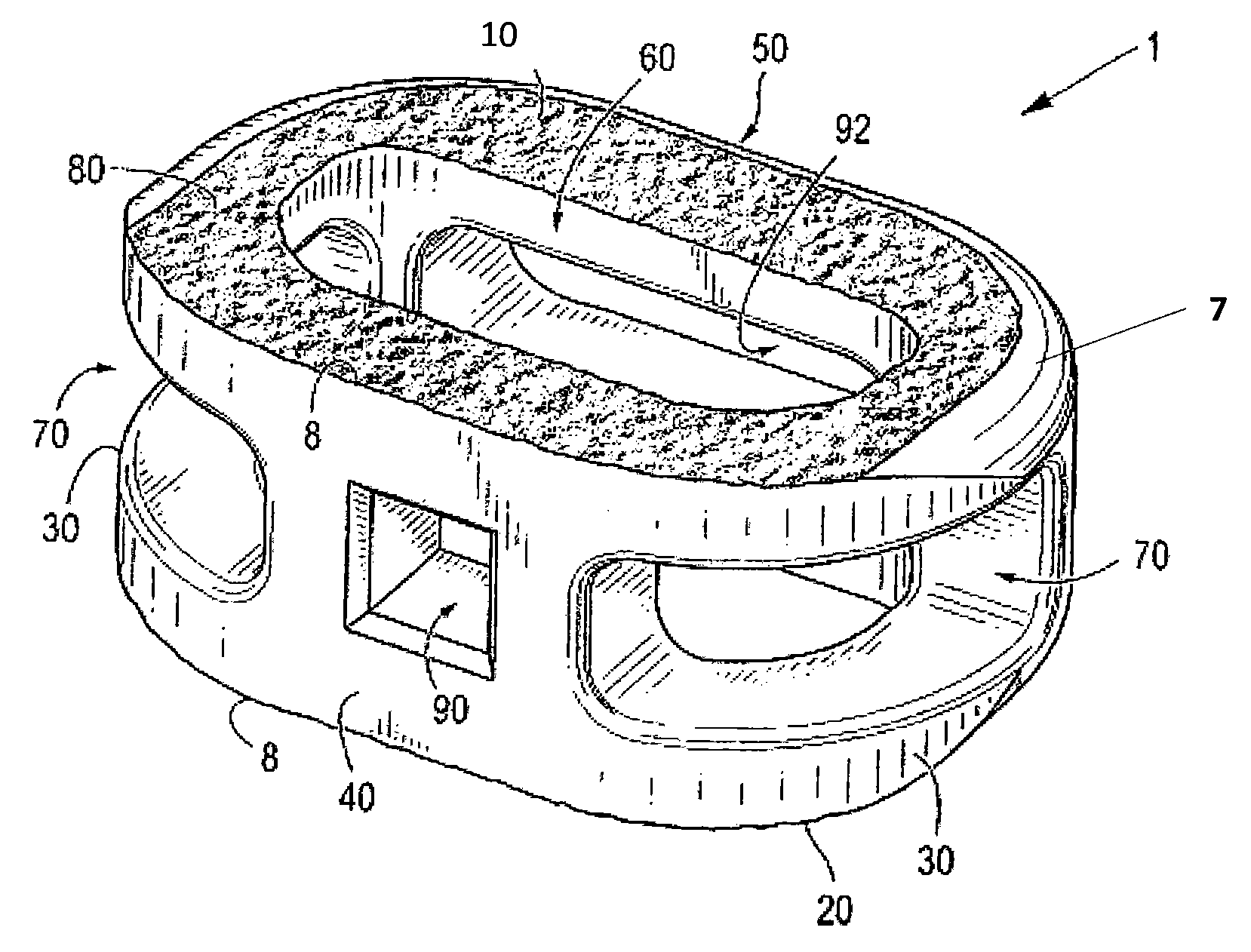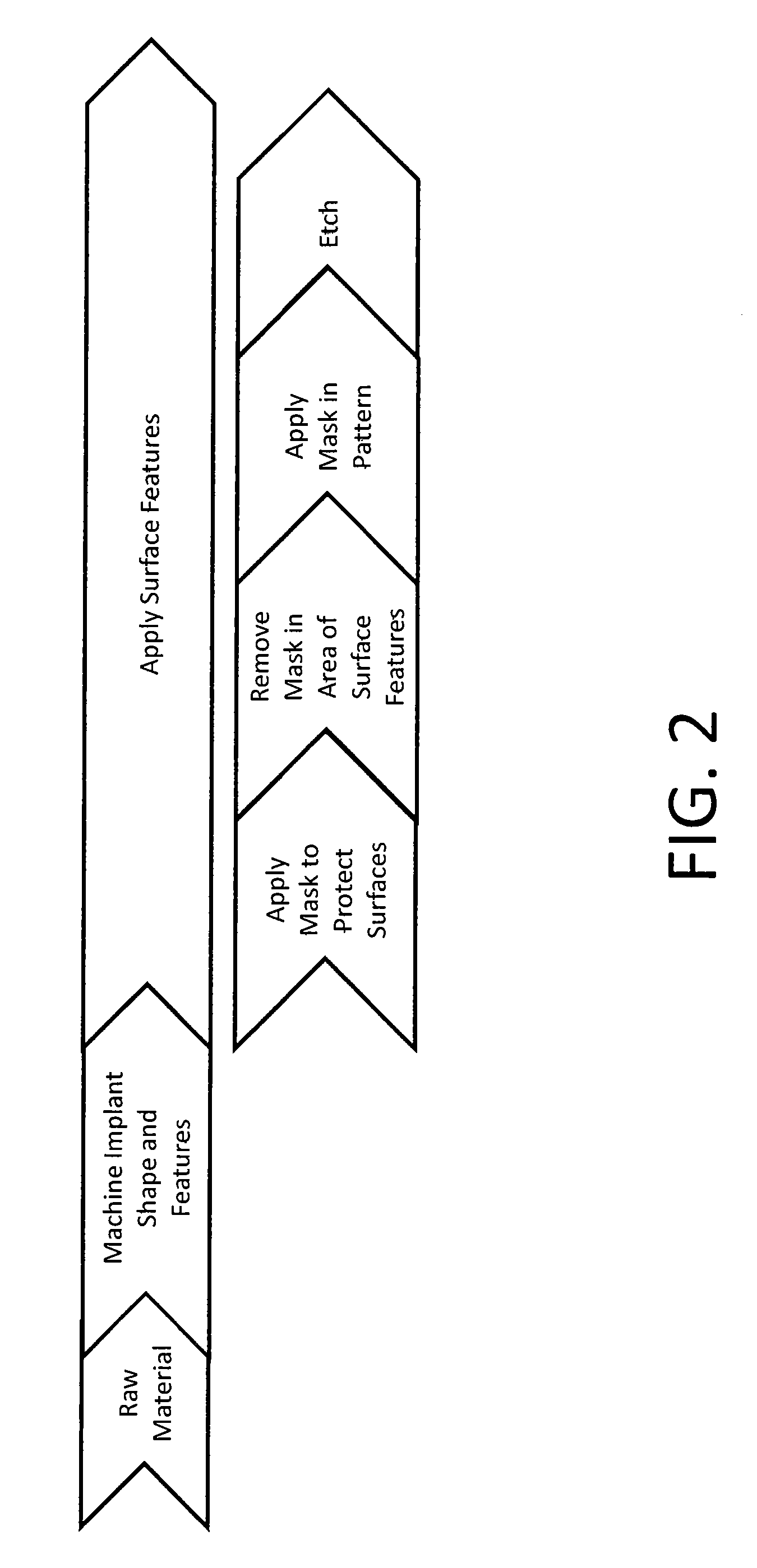Methods for manufacturing implants having integration surfaces
- Summary
- Abstract
- Description
- Claims
- Application Information
AI Technical Summary
Benefits of technology
Problems solved by technology
Method used
Image
Examples
Embodiment Construction
[0039]The present invention provides for interbody spinal implants, including solid body implants and composite implants, produced by fewer process steps and fewer transitions during the manufacturing process. The dimensions and surface features of the implant may be produced in a very accurate and repeatable manner without bleeding (e.g., bleeding of the acid etchant) or poor quality at the edges or interfaces between areas with different surface features (e.g., roughened topography versus substantially smooth surfaces).
[0040]Under common manufacturing techniques, an implant may be produced by machining the implant from a raw material and, after the implant is produced, applying any surface processing to the surfaces requiring such treatment. Referring to the drawing, in which like reference numbers refer to like elements throughout the various figures that comprise the drawing, FIG. 2 depicts a process flowchart according to one method of producing implants. For example, the raw m...
PUM
| Property | Measurement | Unit |
|---|---|---|
| Surface | aaaaa | aaaaa |
Abstract
Description
Claims
Application Information
 Login to View More
Login to View More - R&D
- Intellectual Property
- Life Sciences
- Materials
- Tech Scout
- Unparalleled Data Quality
- Higher Quality Content
- 60% Fewer Hallucinations
Browse by: Latest US Patents, China's latest patents, Technical Efficacy Thesaurus, Application Domain, Technology Topic, Popular Technical Reports.
© 2025 PatSnap. All rights reserved.Legal|Privacy policy|Modern Slavery Act Transparency Statement|Sitemap|About US| Contact US: help@patsnap.com



